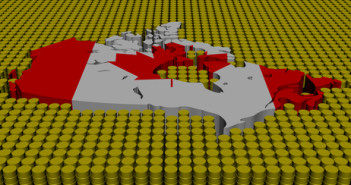The Canadian dollar managed to stage a recovery as the impact of the Iran deal on oil was not too heavy. But what’s next for the loonie?
The team at Credit Agricole maps the risks:
Here is their view, courtesy of eFXnews:
USD/CAD continues to trade in a well-defined range between 1.24 and 1.28. We remain bearish on CAD and continue to look for USD/CAD to test 1.30 sometime in Q2.
Notably, two drivers should continue to underpin CAD weakness.
First, this week Canada releases the Ivey PMI index for March. Another print below 50 which suggests that the economy contracted in Q1 with an average reading of 47.6 in the first two months of the year. What is more relative to trend is that headline PMI continues to suggest a deepening slowdown in activity, which may force the BoC to cut its 2015 growth forecast.
Second, the external backdrop in Canada continues to worsen. Indeed, in 2015, market consensus expects the current account deficit to widen to -2.8% from -2.2% previously. This reflects the drag from exports and lower oil prices but also the rise in import growth, which averaged 7.8% per annum from January 2014 to January 2015. The deterioration in the external balance suggests that Canada will need to attract fresh capital to support CAD. Against a backdrop of low rates and weak growth we doubt Canada can attract the needed flows. Canada economic growth weak and contracting Canada’s capital
For lots more FX trades from major banks, sign up to eFXplus
By signing up to eFXplus via the link above, you are directly supporting Forex Crunch.
